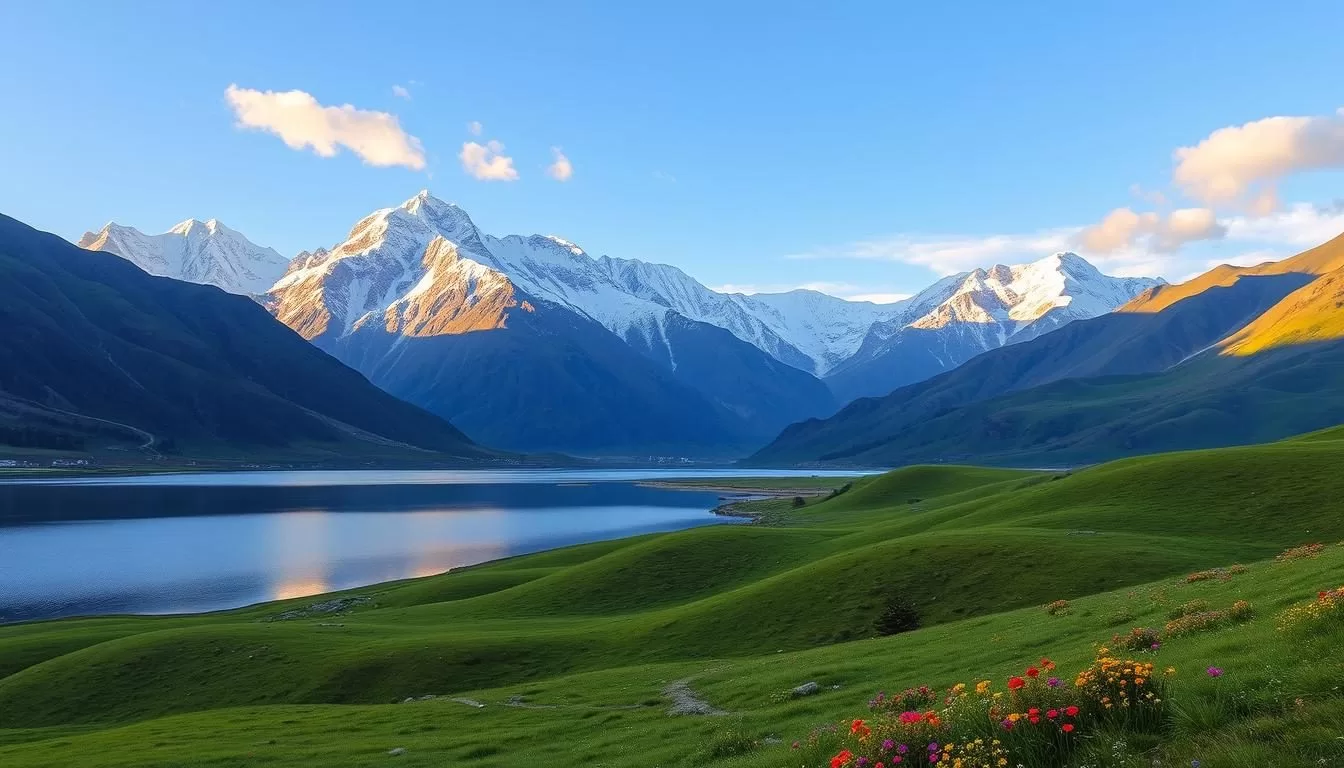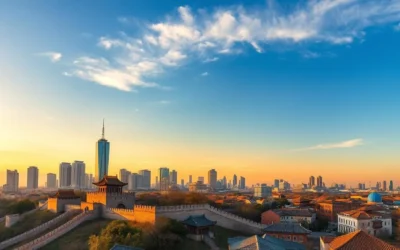✓ Accommodations ✓ Flights ✓ Rental Cars
Choosing the best time to visit a destination can make or break your trip. Weather plays a huge role in shaping your experience, whether you’re chasing clear mountain views or seeking comfortable temperatures. This guide will help you pick the perfect time to explore, ensuring you get the most out of your adventure.
Different seasons offer unique experiences. From mild winters to vibrant autumns, each period has its charm. For example, autumn is known for its mild climate and reduced humidity, making it a favorite for many travelers. Understanding these patterns can help you plan better.
This guide combines expert advice and detailed weather insights to support your planning. Whether you’re a leisure traveler or an adventure seeker, you’ll find tips to make your trip unforgettable. Let’s dive into the details and find the best time for your journey.
Tibet Autonomous Region, China: Best Months for a Weather-Savvy Trip
Timing your visit can transform your experience, especially when weather plays a key role. Daily temperature variations can significantly impact your plans, so understanding these patterns is essential. For instance, summer days are vibrant and warm, perfect for outdoor adventures, while winter offers a quieter, serene atmosphere.
Spring brings mild conditions, making it ideal for sightseeing and exploring without extreme heat or cold. The table below highlights average temperatures across seasons to help you plan better:
| Season | Average Temperature (°F) | Highlights |
|---|---|---|
| Spring | 50-68 | Mild weather, blooming landscapes |
| Summer | 68-77 | Festivals, clear skies |
| Winter | 23-41 | Snow views, fewer crowds |
Whether you prefer the lively energy of summer or the peaceful charm of winter, each season offers something special. Detailed weather statistics can further assist in crafting the perfect itinerary. By aligning your trip with the right season, you’ll ensure a memorable and comfortable journey.
Overview of Tibet’s Unique Climate Patterns
Understanding the unique climate of this high-altitude destination is key to planning your trip. The weather here is shaped by its elevation and seasonal shifts, making it a fascinating place to explore. With long winters, short summers, dry springs, and mild autumns, each season offers something special.
This location experiences an average elevation of 4,500 meters (14,800 feet), creating extreme weather variations. Winters are harsh, with snow cover lasting from November to March, while summers are brief but vibrant. The dry springs and mild autumns are ideal for outdoor activities and sightseeing.
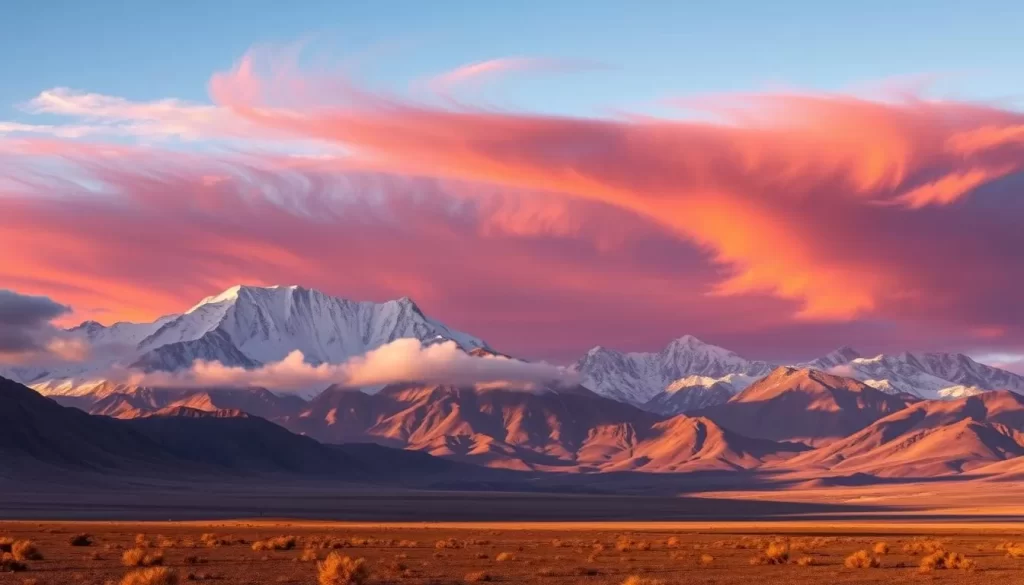
Major cities like Lhasa and Shigatse showcase these patterns clearly. Lhasa’s annual average temperature is around 8°C (46°F), with January being the coldest month at -2°C (28°F) and July the warmest at 17°C (63°F). These conditions influence tourist flow, with peak seasons from June to August seeing a 50% increase in visitors.
Weather also plays a role in local celebrations and outdoor adventures. The high UV index during summer requires precautions, while winter’s serene atmosphere is perfect for cultural exploration. Knowing these patterns ensures a comfortable and memorable visit.
| City | Average Temperature (°F) | Seasonal Highlights |
|---|---|---|
| Lhasa | 28-63 | Winter snow, summer festivals |
| Shigatse | 30-65 | Mild autumns, vibrant springs |
Whether you’re visiting during the new year or planning a summer adventure, understanding the climate is essential. This knowledge helps you choose the right season for your activities and ensures a smooth journey. Embrace the unique weather patterns of this destination for an unforgettable experience.
Why Spring and Autumn Stand Out for Your Tibet Trip
The charm of this place truly shines during spring and autumn. These seasons offer mild weather, low rainfall, and breathtaking views, making them perfect for your journey. Whether you’re exploring the vibrant landscapes or attending local celebrations, you’ll find these months ideal for an unforgettable experience.
Spring brings a scenic transformation to the region. Blooming flowers and lush greenery create a picturesque backdrop for your adventures. Autumn, on the other hand, treats you to golden hues and crisp, clear skies. Both seasons provide comfortable temperatures, allowing you to explore without extreme heat or cold.
One of the biggest advantages of traveling during these months is fewer tourists. You’ll enjoy smoother travel logistics and more peaceful visits to popular sites. This also means better availability for accommodations and tours, giving you more flexibility in planning your trip.
Local festivals add another layer of excitement to your visit. Spring and autumn are rich with traditional celebrations that showcase the region’s culture and heritage. From vibrant parades to spiritual ceremonies, these events offer a unique glimpse into the local way of life.
For nature enthusiasts, spring and autumn provide the best conditions for outdoor activities. Clear skies offer stunning views of Everest Base Camp, while mild temperatures make trekking and sightseeing more enjoyable. Whether you’re a seasoned adventurer or a leisure traveler, these seasons cater to all interests.
| Season | Highlights |
|---|---|
| Spring | Blooming landscapes, mild weather, fewer crowds |
| Autumn | Golden hues, clear skies, vibrant festivals |
Plan your trip during these months to experience the region at its finest. With comfortable weather, stunning scenery, and rich cultural events, spring and autumn promise an unforgettable adventure.
Month-by-Month Weather Guide for Tibet
Planning your trip around the weather can make all the difference in your experience. Each month offers unique conditions, so understanding these patterns ensures a smoother journey. Let’s break down the highlights of April, May, September, and October to help you decide when to visit.
April and May: Blossoms, Mild Temperatures, and Everest Views
April and May mark the start of the season with blooming scenery and pleasant temperatures. The landscape comes alive with vibrant colors, making it perfect for photography and sightseeing. Mild weather allows for comfortable exploration, whether you’re hiking or visiting cultural sites.
This is also the ideal time to catch clear views of Everest. The skies are often free of clouds, offering breathtaking panoramas. However, occasional rain showers can occur, so packing a lightweight raincoat is a smart move.
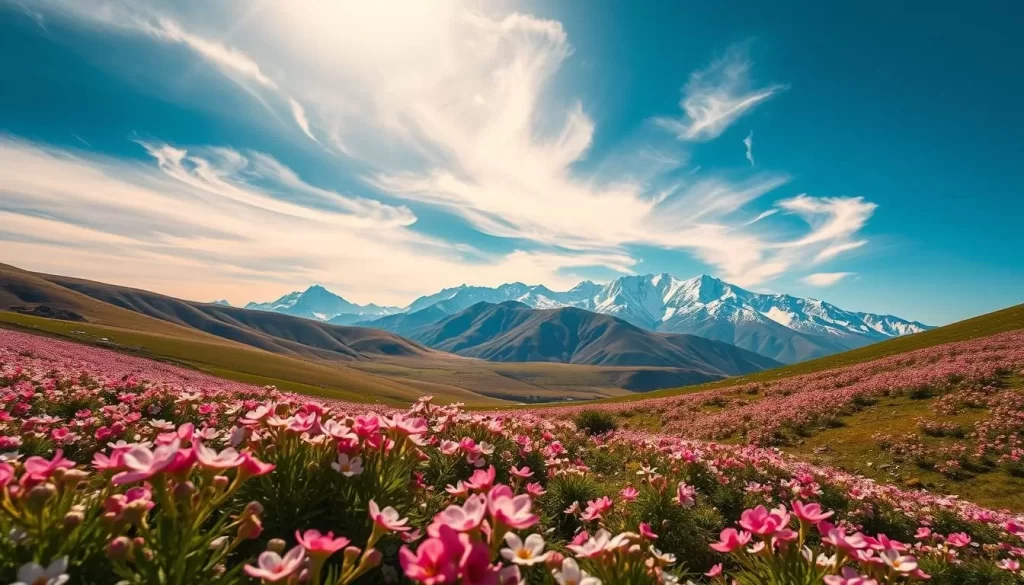
Daylight hours are longer, giving you more time to explore. Layered clothing is recommended to adapt to temperature changes throughout the day. These months are less crowded than the peak summer season, making it easier to enjoy popular attractions.
September and October: Clear Skies, Harvest Scenes, and Ideal Trekking Conditions
September and October are known for their clear skies and post-harvest landscapes. The golden hues of autumn create a picturesque setting, perfect for trekking and outdoor activities. Temperatures are mild, making it comfortable for long hikes.
Rainfall is minimal during these months, ensuring uninterrupted travel plans. The crisp air and stunning scenery make it a favorite among adventurers. Packing sweaters and jackets is essential, as evenings can get chilly.
This period also offers fewer crowds compared to the peak summer months. You’ll have more flexibility in booking accommodations and tours. Whether you’re exploring Everest Base Camp or local villages, these months provide an unforgettable experience.
Navigating Summer in Tibet: Festivals and High-Altitude Adventures
Summer brings a vibrant energy to this destination, making it a favorite for travelers seeking cultural immersion and adventure. The season is packed with festivals, clear skies, and opportunities for high-altitude activities. However, it’s also the busiest time of the year, so planning ahead is essential.
During these months, the region comes alive with celebrations like the Shoton Festival. This event showcases traditional dances, opera performances, and the unveiling of giant thangka paintings. It’s a perfect way to experience local culture and traditions.
Travel popularity peaks in summer, leading to higher prices for accommodations and tours. Despite the cost, the unique experiences and breathtaking views make it worthwhile. Early mornings and evenings offer cooler temperatures, ideal for exploring without the midday heat.
High-altitude adventures, such as trekking to Everest Base Camp, are best enjoyed during this season. The clear skies provide stunning panoramas, while the mild weather ensures a comfortable journey. Packing layers is crucial, as temperatures can fluctuate throughout the day.
Booking in advance is highly recommended due to the influx of tourists. Securing permits, accommodations, and tours early ensures a smooth and stress-free trip. Whether you’re here for the festivals or the natural beauty, summer promises an unforgettable experience.
| Highlight | Details |
|---|---|
| Festivals | Shoton Festival, traditional dances, opera performances |
| Activities | Trekking, Everest Base Camp, high-altitude adventures |
| Weather | Clear skies, mild temperatures, cooler mornings and evenings |
| Tips | Book in advance, pack layers, stay hydrated |
Experiencing Tibet in Winter: Budget Benefits and Quiet Wonders
Winter transforms this destination into a serene wonderland, offering unique experiences. With fewer tourists and discounted travel options, it’s the perfect time for a peaceful holiday. Whether you’re drawn to snow-covered landscapes or cultural treasures, winter has something special to offer.
Fewer Crowds and Discounted Travel Options
Traveling during the colder months means fewer crowds and more affordable rates. Hotels, flights, and train tickets often come with significant discounts, making it easier to plan your trip on a budget. This is especially appealing if you’re looking to explore without the hustle and bustle of peak seasons.
Popular attractions are less crowded, allowing you to enjoy uninterrupted sightseeing. You’ll have more time to appreciate iconic sites like the Potala Palace without long waits. This quieter atmosphere also makes it easier to connect with local culture and traditions.
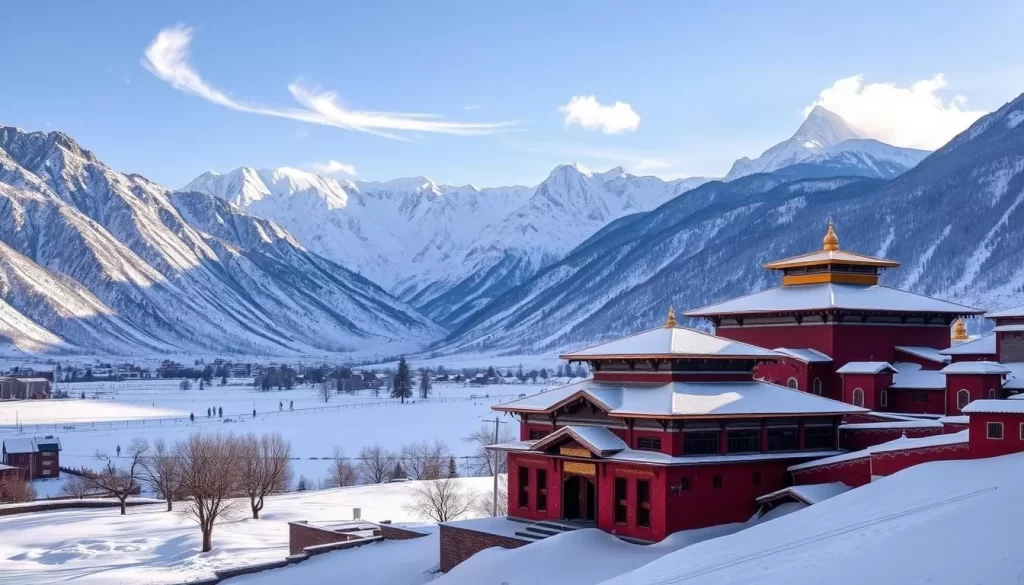
Stunning Snow Views and Cultural Highlights in Lhasa
Winter brings a magical transformation to the region’s landscapes. Snow-covered mountains and historic landmarks create breathtaking views that are perfect for photography. The crisp, clear air enhances the beauty of these scenes, making it a favorite season for nature lovers.
Cultural highlights like the Potala Palace take on a new charm when dusted with snow. Visiting during this time offers a unique perspective on the region’s heritage. Local markets and ancient monuments are also more accessible, providing a deeper connection to the area’s history.
Here’s a quick guide to winter travel benefits:
| Benefit | Details |
|---|---|
| Discounted Rates | Affordable hotels, flights, and train tickets |
| Fewer Crowds | Peaceful visits to popular attractions |
| Snow Views | Stunning landscapes and photo opportunities |
| Cultural Access | Quiet exploration of historic sites and markets |
For a truly immersive experience, consider planning your trip around cultural events. Winter offers a unique chance to engage with local traditions and festivals. Learn more about cultural tourism to make the most of your journey.
Pack warm clothing and plan activities around shorter daylight hours. Layered outfits and sturdy footwear will keep you comfortable while exploring. Embrace the quiet wonders of winter for an unforgettable adventure.
Planning Around Tibetan Festivals and Cultural Highlights
Aligning your visit with local festivals can deepen your cultural experience. These events offer a vibrant glimpse into traditions and provide unique opportunities for photography and storytelling. From the colorful celebrations of Losar to the spiritual significance of Saga Dawa, timing your trip around these occasions ensures a richer journey.
Losar, Saga Dawa, and Other Must-See Celebrations
Losar, the Tibetan New Year, is one of the most significant festivals. It features traditional dances, music, and elaborate feasts. The festival often coincides with stunning snow-covered landscapes, adding a magical touch to the celebrations.
Saga Dawa, celebrated in the fourth month of the lunar calendar, honors Buddha’s birth, enlightenment, and death. Pilgrims gather at sacred sites, creating a spiritual atmosphere. The festival is a perfect time to witness local devotion and the breathtaking mountain views.
Immersive Cultural Experiences and Local Traditions
Festivals are not just about celebrations; they’re a gateway to understanding local life. You’ll see intricate artistry in traditional costumes and decorations. The vibrant colors and lively performances make these events unforgettable.
Here are some tips for planning your visit around festivals:
- Book early: Accommodations fill up quickly during major events.
- Respect traditions: Dress modestly and follow local customs.
- Capture the moment: Bring a good camera for stunning landscape shots.
For more insights into cultural experiences, explore the rich heritage of Sichuan and Chongqing. These regions offer a fascinating blend of history and tradition, complementing your journey.
Essential Travel Tips for a Weather-Savvy Trip to Tibet
To make the most of your journey, planning ahead is crucial. Whether you’re exploring high-altitude destinations or navigating variable weather, a few smart strategies can ensure a smoother experience. From booking early to packing wisely, these tips will help you stay prepared and comfortable.
Booking in Advance and Managing Altitude
Booking your travel arrangements well in advance saves time and reduces stress. Popular destinations like Everest Base Camp often require permits and accommodations that fill up quickly. Early planning ensures you secure the best options.
Altitude management is another critical factor. Gradual acclimatization helps your body adjust to high elevations, reducing the risk of altitude sickness. Stay hydrated, avoid overexertion, and consider carrying altitude medication like Diamox for emergencies.
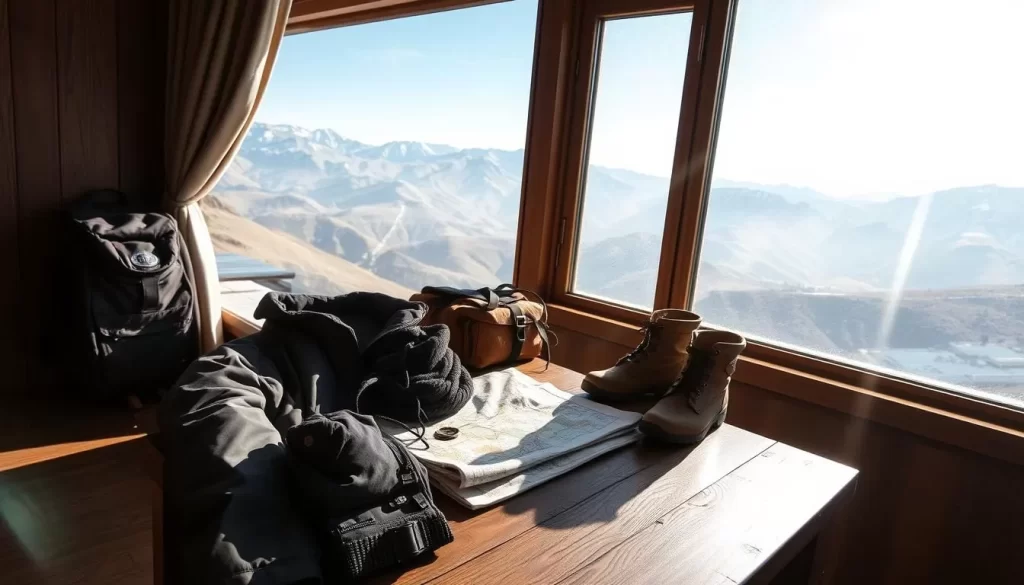
Packing Smart for Variable Temperatures
Packing for variable weather requires careful thought. Layered clothing is essential to handle temperature fluctuations, from warm days to chilly nights. Include thermal wear, a waterproof jacket, and sturdy hiking boots for comfort and protection.
Don’t forget essentials like sunscreen, lip balm, and a reusable water bottle. High-altitude destinations demand extra precautions, such as sun protection and hydration strategies. Packing smart ensures you’re ready for any adventure.
For more insights on planning trips around weather, check out this guide on the best time to visit Malawi. It’s a great resource for understanding seasonal variations and making the most of your travels.
Integrating Your Tibet Journey with Broader China Adventures
Exploring this destination becomes even more enriching when combined with broader adventures across the country. Major cities like Beijing, Shanghai, and Xi’an serve as perfect gateways to extend your trip. These urban hubs offer a mix of cultural, historical, and modern experiences that complement your high-altitude adventure.
Linking your itinerary with these cities is seamless. Flights and train routes connect directly to Lhasa, making travel convenient. For example, a flight from Beijing to Lhasa takes about 4 hours, while the train journey offers a scenic route through the countryside.
Cultural diversity is a highlight of this combined journey. From the ancient wonders of Xi’an to the bustling streets of Shanghai, each city adds a unique layer to your experience. This blend of urban exploration and high-altitude adventure creates a well-rounded trip.
Practical Itinerary Ideas
Here’s an example of a 10-day itinerary that combines urban and high-altitude exploration:
| Day | Location | Activities |
|---|---|---|
| 1-3 | Beijing | Visit the Great Wall, Forbidden City |
| 4-6 | Lhasa | Explore Potala Palace, Jokhang Temple |
| 7-10 | Shanghai | Stroll the Bund, visit Yu Garden |
For more insights on planning multi-destination trips, check out this guide on personalized travel itineraries. It’s a great resource for crafting a seamless adventure.
Combining your journey with broader adventures ensures a richer experience. Whether you’re drawn to urban exploration or high-altitude wonders, this approach offers the best of both worlds.
Conclusion
Your journey to this high-altitude destination can be truly unforgettable when timed right. Understanding seasonal weather patterns ensures you enjoy clear views at Everest Base Camp and vibrant festivals. Spring and autumn offer mild temperatures and fewer crowds, while winter provides budget-friendly travel and serene snowscapes.
Planning ahead is key. Book accommodations and permits early, especially during peak seasons. Pack smart with layered clothing to adapt to temperature changes. This guide equips you with the insights needed for a seamless and memorable adventure.
For deeper cultural immersion, consider aligning your trip with local celebrations. Events like Losar and Saga Dawa offer a glimpse into rich traditions. Learn more about constructive dialogue to enhance your experience.
Use this guide to plan wisely and make the most of your visit. Whether you’re trekking to Mount Kailash or exploring South China, the right timing ensures a rewarding journey.
The above is subject to change.
Check back often to TRAVEL.COM for the latest travel tips and deals.
